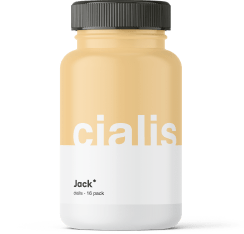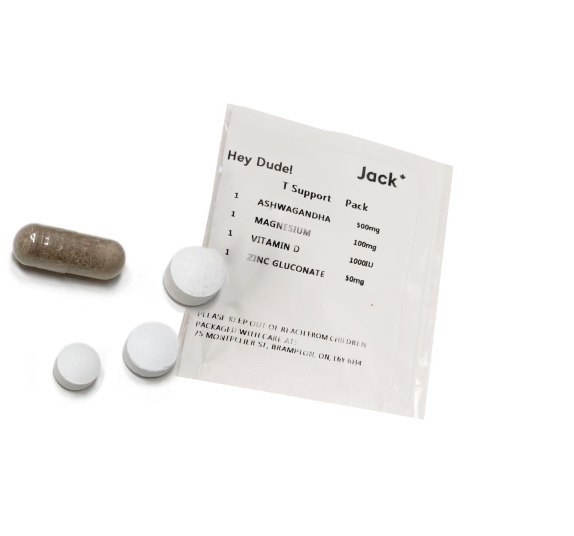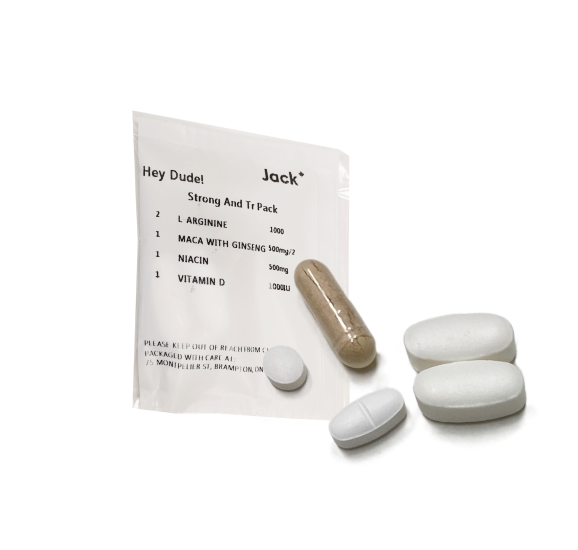Navigating the path to obtaining a prescription for Testosterone Replacement Therapy (TRT) can seem daunting at first, but with the right knowledge and approach, it becomes a manageable and straightforward process. TRT has emerged as a pivotal treatment for individuals experiencing the symptoms of low testosterone, a condition that can significantly impact one’s quality of life.
This guide is designed to provide you with a comprehensive overview of the steps involved in getting prescribed TRT, from recognizing the signs of testosterone deficiency to consulting with healthcare professionals and understanding the different treatment options available.
Whether you’re grappling with fatigue, low libido, muscle weakness, or mood changes, this guide will equip you with the necessary insights to make informed decisions about TRT and how it could transform your health and well-being.
What is Testosterone Replacement Therapy?
Testosterone Replacement Therapy (TRT) is a medical treatment designed to restore testosterone levels in individuals diagnosed with testosterone deficiency. This condition, characterized by low levels of testosterone, can lead to various symptoms that impact an individual’s quality of life, including decreased sex drive, fatigue, reduced muscle mass, and mood changes.
TRT aims to alleviate these symptoms by replenishing testosterone through various methods such as injections, gels, patches, or tablets, thereby improving the patient’s overall health and well-being.
The therapy begins with a comprehensive evaluation, including a medical consultation to discuss symptoms and health history, followed by hormonal testing to measure testosterone levels accurately. This assessment is crucial in determining whether the symptoms are due to low testosterone or other underlying health issues.
Based on the results, a tailored treatment plan is formulated, considering factors like the patient’s health status, lifestyle, and specific needs. Regular monitoring and adjustments ensure the treatment remains effective and safe, offering ongoing support to navigate the therapy successfully.
Functions of Testosterone in the Body
Testosterone plays a pivotal role in various bodily functions, highlighting the importance of maintaining balanced levels for overall health. Primarily known as the male sex hormone, its functions extend beyond sexual health, significantly influencing both physical and mental aspects of well-being. Here are some of the critical functions of testosterone in the body:
- Sexual Function: Testosterone is crucial for developing male sexual characteristics and maintaining sexual function. It affects libido (sex drive), erectile function, and sperm production, playing a key role in fertility.
- Muscle and Bone Mass: Testosterone contributes to muscle strength and mass. It helps in the development of denser, stronger bones, reducing the risk of osteoporosis and fractures.
- Fat Distribution: It influences the body’s fat distribution, playing a role in metabolism and the risk factors for various metabolic conditions.
- Red Blood Cell Production: Testosterone aids in the production of red blood cells, which are essential for carrying oxygen throughout the body, enhancing stamina and energy levels.
- Mood and Mental Health: Testosterone levels are linked to mood regulation. Low levels can lead to feelings of depression, irritability, and a general decrease in well-being.
Understanding the multifaceted role of testosterone in the body underscores the potential benefits of TRT for individuals experiencing testosterone deficiency. By addressing the hormonal imbalance, TRT can significantly improve the quality of life, affecting everything from physical strength and sexual health to mental clarity and emotional stability.
Identifying the Need for TRT
The need for Testosterone Replacement Therapy (TRT) arises when an individual experiences symptoms and health effects due to low levels of testosterone, a condition often referred to as testosterone deficiency or hypogonadism.
It’s crucial to understand that TRT is not a one-size-fits-all solution but a targeted treatment for those who have been clinically diagnosed with low testosterone, confirmed through blood tests and evaluation by a healthcare professional. Identifying the need for TRT involves recognizing the symptoms of testosterone deficiency and understanding the importance of a comprehensive physical examination.
Recognizing Symptoms of Testosterone Deficiency
Testosterone deficiency can manifest through a range of symptoms that affect both physical and mental health. Recognizing these symptoms is the first step toward determining the need for TRT. Common symptoms include:
- Reduced Sex Drive: A noticeable decrease in libido or sexual desire.
- Erectile Dysfunction: Difficulties in achieving or maintaining an erection.
- Fatigue: Persistent feelings of tiredness and a lack of energy, even with adequate rest.
- Muscle Weakness: Loss of muscle strength and difficulty in building muscle mass.
- Increased Body Fat: Despite regular exercise and a healthy diet, particularly around the abdomen.
- Mood Changes: Experiencing mood swings, irritability, or depression.
- Decreased Bone Mass: Leading to an increased risk of fractures and osteoporosis.
- Reduced Body Hair: A noticeable decrease in facial and body hair growth.
It’s essential to note that these symptoms can also be related to other health conditions; hence, they should be discussed with a healthcare provider for an accurate diagnosis.
The Importance of a Physical Examination for TRT
A thorough physical examination is a cornerstone in the diagnosis of testosterone deficiency and the subsequent consideration for TRT. This examination allows the doctor to:
- Assess Overall Health: Evaluate the patient’s general health status, identifying any related or unrelated health issues.
- Identify Physical Signs: Look for physical signs of testosterone deficiency, such as changes in body composition, hair distribution, and breast enlargement (gynecomastia).
- Rule Out Other Conditions: Distinguish symptoms of low testosterone from other medical conditions that could present with similar signs.
- Discuss Health History: Review any existing health conditions, medications, and family history that could influence testosterone levels and treatment options.
The physical examination, combined with a detailed medical history and blood tests to measure testosterone levels, helps ensure that TRT is recommended only when it is the most appropriate treatment option. This comprehensive approach ensures that the therapy is effective and safe for the patient, addressing their specific needs and improving their quality of life.
Preparing for Your Doctor's Appointment
When considering Testosterone Replacement Therapy (TRT), preparing for your doctor’s appointment is crucial to ensure that you receive the most accurate assessment and appropriate guidance. Effective preparation helps in making informed decisions about your health and can significantly impact the outcome of your consultation. Here’s how to prepare for the appointment and what to expect during your visit.
Effective Communication: Discussing Symptoms and Concerns
Clear and open communication with your doctor is essential. Here’s how to effectively discuss your symptoms and concerns:
- List Your Symptoms: Before the appointment, make a list of any symptoms you’ve been experiencing, regardless of whether you think they’re related to low testosterone. Include how these symptoms impact your daily life and how long you’ve been experiencing them.
- Note Any Health Changes: Mention any significant changes in your health, such as weight gain, mood swings, or changes in sexual function. These details can provide valuable clues to your overall health and testosterone levels.
- Prepare Your Medical History: Be ready to discuss your personal and family medical history, including any chronic conditions, surgeries, or treatments you’ve undergone. This information can help your doctor understand your health background and any factors that might affect your testosterone levels or treatment options.
- Write Down Questions: It’s easy to forget to ask important questions during the consultation. Write down any questions or concerns you have about testosterone deficiency, TRT, and its implications for your health and lifestyle. This could include questions about the benefits and risks of TRT, the different treatment options available, and how the therapy could impact your daily life.
What to Expect During the Consultation
Understanding what to expect during the consultation can help reduce anxiety and make the appointment more productive:
- Review of Symptoms and Medical History: Your doctor will discuss your symptoms, medical history, and any concerns you’ve listed. This conversation is crucial for assessing whether your symptoms might be related to low testosterone or other health issues.
- Physical Examination: Expect a thorough physical examination to check for signs of testosterone deficiency and assess your overall health. This may include measuring your height and weight, checking your blood pressure, and examining areas of your body for signs of hormone imbalance.
- Blood Tests: Your doctor will likely order blood tests to measure your testosterone levels. These tests are typically conducted in the morning when testosterone levels are at their highest. You may also be tested for other factors that could be contributing to your symptoms.
- Discussion of Potential Treatment Options: If low testosterone is diagnosed, your doctor will discuss potential treatment options, including the benefits and risks associated with TRT. This is also the time to ask any questions you’ve prepared.
- Next Steps: Before leaving, you’ll discuss the next steps, which may include scheduling follow-up appointments for further testing or starting a treatment plan. Your doctor may also provide advice on lifestyle changes that could improve your symptoms.
Preparing for your doctor’s appointment by organizing your thoughts, symptoms, and questions ensures that you make the most of your consultation, paving the way for an informed and personalized approach to managing low testosterone.
Exploring TRT Options
Choosing the right Testosterone Replacement Therapy (TRT) option is a pivotal decision that should be made with comprehensive knowledge of the available treatments. Each form of TRT has its unique advantages, methods of administration, and considerations, making it essential to explore all options to find the most suitable one for your needs and lifestyle.
Overview of Testosterone Treatment Forms
TRT can be administered in several forms, each designed to increase testosterone levels in men with diagnosed deficiency. The main goal across all forms is to alleviate symptoms of low testosterone, such as reduced sex drive, fatigue, loss of muscle mass, and mood swings. Understanding the specifics of each option can help you and your doctor decide the best course of action.
Injectable
Injectable testosterone is one of the most common and effective forms of TRT. It typically involves:
- Administration: Testosterone is injected directly into the muscles, usually every two to three weeks, though the frequency can vary based on the specific formulation and individual response to the therapy.
- Benefits: This method allows for the direct entry of testosterone into the bloodstream, providing a more controlled release of the hormone. It can lead to significant improvements in symptoms and is often more cost-effective than other forms.
- Considerations: Requires regular visits to a healthcare provider for injections, unless self-administration is possible and advised. There’s a potential for fluctuations in testosterone levels, leading to varied energy levels and mood swings between doses.
Topical
Topical forms of TRT include gels, creams, and patches applied directly to the skin:
- Administration: These are applied daily to clean, dry skin on areas such as the upper arms, shoulders, or abdomen. The skin absorbs the testosterone, gradually releasing it into the bloodstream.
- Benefits: Topical applications offer a non-invasive, easy-to-use option that maintains more consistent testosterone levels than injectable forms. They are suitable for those who prefer avoiding needles.
- Considerations: It’s important to ensure the gel or cream fully absorbs to avoid transferring testosterone to others through skin contact. Some may experience skin irritation or allergic reactions at the application site.
Other TRT Methods
Other less common TRT methods include:
- Oral Testosterone: Available in pill form, this option is less frequently used due to concerns over liver toxicity and less efficient absorption rates.
- Testosterone Pellets: These are small pellets inserted under the skin, usually around the hip area, providing a slow release of testosterone over a few months. This method requires minor surgical procedures for pellet insertion every 3-6 months.
- Nasal Testosterone: A relatively new form of TRT, testosterone is administered through a nasal spray. This method allows for quick absorption with multiple daily applications.
Exploring TRT options requires careful consideration of each method’s benefits and drawbacks, lifestyle compatibility, and potential impact on symptoms. Consultation with a healthcare provider specializing in hormone therapy is crucial to determine the most appropriate form of TRT based on individual health needs and treatment goals.
Understanding Risks and Safety
While Testosterone Replacement Therapy (TRT) offers significant benefits for men with low testosterone levels, it’s essential to approach treatment with a clear understanding of the potential risks and safety concerns. Like any medical treatment, TRT comes with a spectrum of possible side effects and is not suitable for everyone. Awareness and careful consideration of these factors are crucial in making informed decisions about pursuing TRT.
Side Effects and Safety Concerns of TRT
TRT can lead to various side effects, which may vary depending on the method of testosterone administration, dosage, and individual response to the therapy. Common side effects and safety concerns include:
- Skin Reactions: TRT can cause skin irritation or allergic reactions at the application site.
- Polycythemia: An increase in red blood cell count, which can raise the risk of blood clots, potentially leading to conditions such as deep vein thrombosis or pulmonary embolism.
- Sleep Apnea: TRT may exacerbate existing sleep apnea or cause new onset in susceptible individuals, affecting sleep quality and overall health.
- Prostate Health: There is ongoing debate and research regarding TRT’s impact on prostate health. Some studies suggest that TRT might stimulate prostate tissue growth or worsen existing prostate cancer, although recent research indicates that TRT does not increase the risk of developing prostate cancer in men with low testosterone levels.
- Cardiovascular Risks: Some studies have raised concerns about the potential for TRT to increase the risk of heart attack and stroke, especially in men with pre-existing heart conditions. However, evidence is mixed, and more research is needed to clarify these risks.
- Fertility Issues: Testosterone therapy can decrease sperm production, affecting fertility. Men considering future fatherhood should discuss alternative treatments or sperm preservation methods with their doctor.
Monitoring and regular follow-up with a healthcare provider are vital to managing these side effects and mitigating risks during TRT.
Who Should Avoid TRT and the Reasons Why
TRT is not suitable for everyone, and certain individuals should avoid it due to increased risks or potential adverse effects. These include:
- Men with Prostate or Breast Cancer: Testosterone can stimulate the growth of prostate and breast cancer cells. Patients with these conditions are generally advised against TRT.
- Men Planning to Have Children: Since TRT can reduce sperm count, men wishing to father children should consider alternative treatments.
- Individuals with Severe Sleep Apnea: Unless the condition is well-managed, TRT may worsen sleep apnea, leading to significant health complications.
- Men with Uncontrolled Heart Conditions: Those with advanced heart disease or uncontrolled heart failure may face increased risks from TRT, including the potential for cardiovascular events.
- Men with Polycythemia: Individuals with a high red blood cell count should avoid TRT, as it can further increase the risk of blood clot formation.
Before starting TRT, it’s essential to undergo a thorough medical evaluation with your doctor, including a discussion of your medical history, current health status, and future health goals. This conversation should cover TRT’s potential benefits and risks, tailored to your specific health profile and lifestyle.
Understanding Risks and Safety
While Testosterone Replacement Therapy (TRT) offers significant benefits for men with low testosterone levels, it’s essential to approach treatment with a clear understanding of the potential risks and safety concerns. Like any medical treatment, TRT comes with a spectrum of possible side effects and is not suitable for everyone. Awareness and careful consideration of these factors are crucial in making informed decisions about pursuing TRT.
Side Effects and Safety Concerns of TRT
TRT can lead to various side effects, which may vary depending on the method of testosterone administration, dosage, and individual response to the therapy. Common side effects and safety concerns include:
- Skin Reactions: Topical forms of TRT, such as gels and patches, can cause skin irritation or allergic reactions at the application site.
- Polycythemia: An increase in red blood cell count, which can raise the risk of blood clots, potentially leading to conditions such as deep vein thrombosis or pulmonary embolism.
- Sleep Apnea: TRT may exacerbate existing sleep apnea or cause new onset in susceptible individuals, affecting sleep quality and overall health.
- Prostate Health: There is ongoing debate and research regarding TRT’s impact on prostate health. Some studies suggest that TRT might stimulate prostate tissue growth or worsen existing prostate cancer, although recent research indicates that TRT does not increase the risk of developing prostate cancer in men with low testosterone levels.
- Cardiovascular Risks: Some studies have raised concerns about the potential for TRT to increase the risk of heart attack and stroke, especially in men with pre-existing heart conditions. However, evidence is mixed, and more research is needed to clarify these risks.
- Fertility Issues: Testosterone therapy can decrease sperm production, affecting fertility. Men considering future fatherhood should discuss alternative treatments or sperm preservation methods with their doctor.
Monitoring and regular follow-up with a healthcare provider are vital to managing these side effects and mitigating risks during TRT.
Who Should Avoid TRT and the Reasons Why
TRT is not suitable for everyone, and certain individuals should avoid it due to increased risks or potential adverse effects. These include:
- Men with Prostate or Breast Cancer: Testosterone can stimulate the growth of prostate and breast cancer cells. Patients with these conditions are generally advised against TRT.
- Men Planning to Have Children: Since TRT can reduce sperm count, men wishing to father children should consider alternative treatments.
- Individuals with Severe Sleep Apnea: Unless the condition is well-managed, TRT may worsen sleep apnea, leading to significant health complications.
- Men with Uncontrolled Heart Conditions: Those with advanced heart disease or uncontrolled heart failure may face increased risks from TRT, including the potential for cardiovascular events.
- Men with Polycythemia: Individuals with a high red blood cell count should avoid TRT, as it can further increase the risk of blood clot formation.
Before starting TRT, it’s essential to undergo a thorough medical evaluation with your doctor, including a discussion of your medical history, current health status, and future health goals. This conversation should cover TRT’s potential benefits and risks, tailored to your specific health profile and lifestyle.
Key Takeaways
- Consultation and Personalization: Choosing the right TRT option requires a thorough consultation with a healthcare professional to assess individual health needs and lifestyle preferences. The treatment plan should be personalized, considering factors like potential side effects, convenience, costs, and insurance coverage, with an openness to adjust based on the body’s response.
- Awareness of Long-Term Effects: While TRT offers significant benefits like improved mood, energy, sexual function, and muscle strength, it’s important to be aware of its long-term effects. These include potential impacts on prostate and cardiovascular health, the necessity for ongoing monitoring, and considerations regarding fertility.
- Role of Lifestyle Changes: Integrating positive lifestyle changes with TRT can maximize the therapy’s benefits. A balanced diet, regular exercise, effective weight management, stress reduction, and avoiding harmful substances significantly contribute to the success of TRT and overall health improvement.
Frequently Asked Questions
How do I determine the best type of TRT for my needs?
Consult with a healthcare provider experienced in hormone therapy to assess your health and testosterone levels. Consider a TRT form that fits your lifestyle. Evaluate potential side effects, convenience, costs, and insurance coverage. Be prepared to adjust your treatment based on monitoring and response.
What are the long-term effects of undergoing TRT?
Long-term TRT can significantly improve quality of life, mood, energy, sexual function, and muscle strength. It also increases bone density, reducing the risk of osteoporosis. The impact on prostate and cardiovascular health varies, so ongoing monitoring is essential. TRT may affect sperm production, impacting fertility.
Can lifestyle changes complement TRT treatment effectively?
Yes, lifestyle changes can enhance the effectiveness of TRT. A balanced diet, regular exercise, weight management, stress reduction techniques, and avoiding substances like alcohol and tobacco can improve treatment outcomes and contribute to overall well-being alongside TRT.






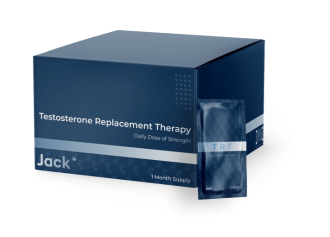
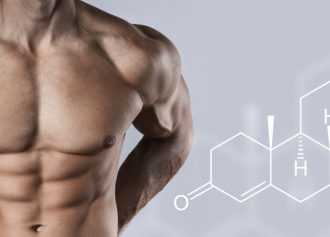






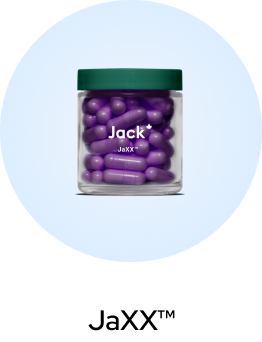
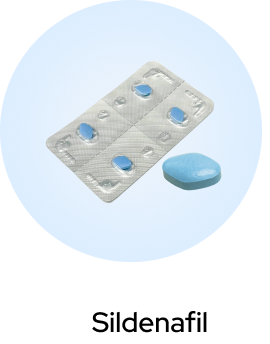
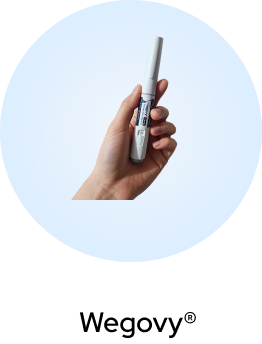
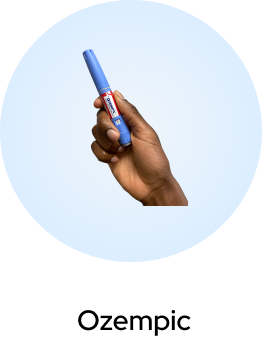


 (US)
(US)